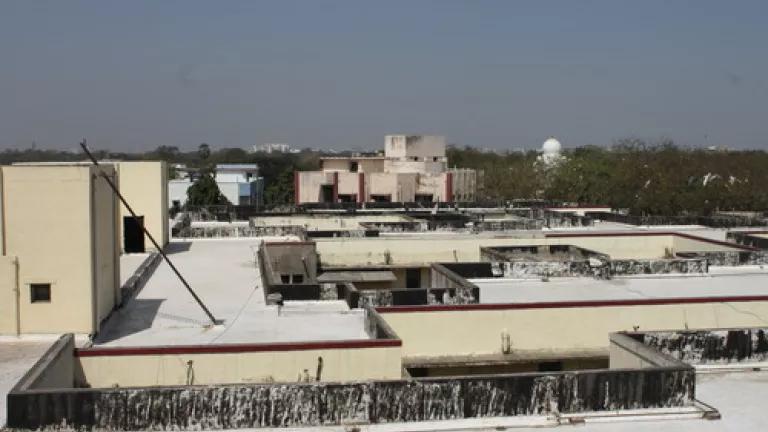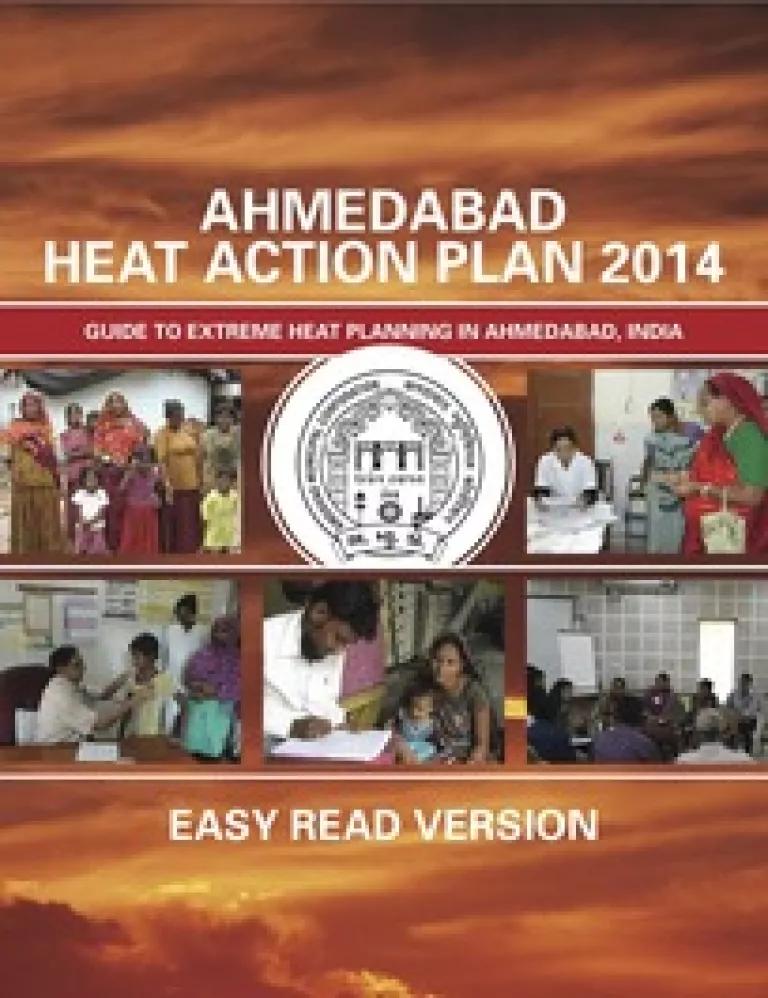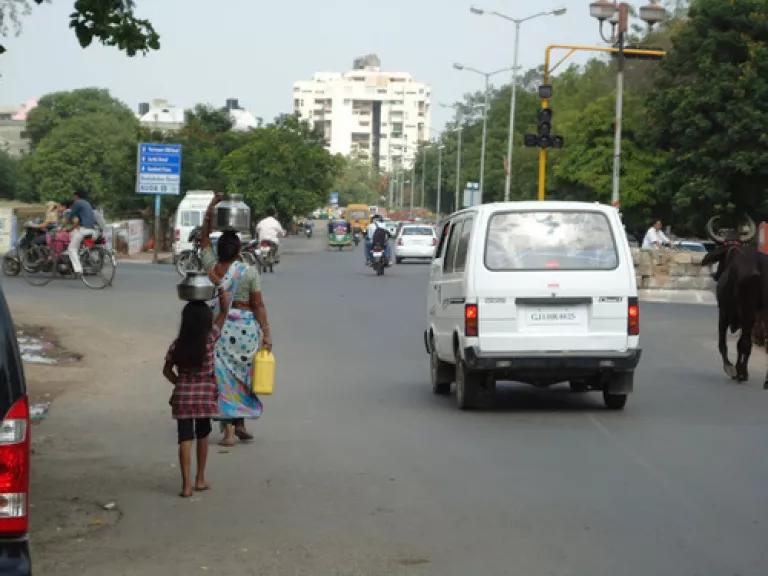Protecting Communities from Extreme Heat: 2014 Heat Action Plan Emphasizes Cutting-Edge Climate Adaption Efforts in Ahmedabad, India

Our local partners and I recently visited Shardaben General Hospital in Ahmedabad, the government hospital that serves this fast-growing city’s poorest communities. As temperatures climb and we prepare for the 2014 heat season, Dr. Panchshila Damor showed us the newly completed “cool roof” installed to reduce the impacts of extreme heat on hospital patients and save lives — especially infants. The hospital visit was part of our ongoing activities with a coalition of partners, including the Indian Institute of Public Health, Gandhinagar (IIPH-G), to develop the 2014 Heat Action Plan, scaling local efforts to address the rising threat posed by heat waves.
In 2010, Ahmedabad experienced an extreme heat wave, with maximum temperatures peaking at 46.8ºC (more than 116ºF), a 50-year record high. During the scorching summer, the hospital experienced a dramatic increase in patients with heat-related illness including heat stress, heat strokes, and respiratory and gastrointestinal illness. The neonatal ward (the unit treating newborn babies) was located on the top floor of the building at the time, creating an oven-like effect with temperatures even hotter than in the rest of the hospital.
To mitigate the impacts of heat on patients and based on recommendations from our project team, the hospital has since installed a white china mosaic roof and moved the neonatal unit to the ground floor. The cool roof's color and material reflect the sun’s rays more than the old black tar roof, keeping the hospital’s interior cooler. As climate change worsens and extreme heat events are expected to become more frequent and severe, adaptation efforts like this become more urgent.
White china mosaic roof on Shardaben General Hospital in Ahmedabad, India, March 2013. Photo by Nehmat Kaur.
Growing Body of Science
The international scientific community is taking notice of our team of partners’ cutting edge approach to addressing climate change and saving lives as well. The growing body of science generated by this project’s public health and scientific experts is undergoing publication in multiple journals, including:
- A forthcoming peer-reviewed paper in the science journal PLOS ONE will document and analyze the deadly effects of the severe May 2010 heat wave on public health in the city of Ahmedabad. This journal article is one of the first to analyze the mortality caused by heat in the developing world, and will be availabel here.
- An overview of the Heat Action Plan’s development from conception to implementation in 2013 is also in press to be published in the International Journal of Environmental Research and Public Health (IJERPH).
- An analysis of the impact the 2010 heat wave had on newborns in Ahmedabad’s hospitals, and proactive hospital policy changes to protect neonates from heat-related illness moving forward, was recently published in the Journal of Environmental and Public Health.
- A paper featuring the survey and vulnerability assessment of Ahmedabad’s slum community to the health threats of extreme heat was published last year in the IJERPH as well.
Ahmedabad’s 2014 Heat Action Plan

The innovative Heat Action Plan, created by the Ahmedabad Municipal Corporation (AMC) in partnership with an international coalition of health and academic groups including NRDC, is tailored to help the city’s at-risk residents cope with rising heat.
Building off of last year’s successful launch of South Asia’s first-ever early warning system and preparedness plan for extreme heat events, the Plan will reduce the deadly impact of extreme heat by initiating an early warning system for residents, providing preparation and training to medical and community workers, building public awareness of heat-related health risks, and coordinating inter-agency emergency response efforts when heat waves hit.
New efforts for this year as part of Ahmedabad’s 2014 Heat Action Plan include:
- new means of public outreach on the health risks of extreme heat, including redesigned ads and posters and placement of LED scrolling boards to announce the temperature and heat-health alerts;
- more robust distribution of fresh drinking water during extreme heat days; and
- increased training to help health workers recognize and treat patients suffering from heat-related illnesses.

Ahmedabad residents carrying portable water, July 2012. Photo by Nilesh Vilas Thube.
The recommendations of the 2014 Heat Action Plan are based on robust scientific analysis of temperature data, mortality data from city hospitals, emergency ambulance call records, heat vulnerability surveys, focus group results, and interviews with government officials. It is the result of collaboration between health and academic partners dating back to 2011. Along with NRDC, the coalition includes AMC and public health and policy experts at the IIPH-G, the Public Health Foundation of India, Icahn School of Medicine at Mount Sinai, Rollins School of Public Health of Emory University, Georgia Institute of Technology, Sri Ramachandra University, and has been supported by the Climate & Development Knowledge Network.
As Ahmedabad’s sweltering heat season hits the city in the coming months, local officials have tools to better protect vulnerable residents through early warnings, education and increased medical capacity to recognize and treat heat-related illness. We look forward to continuing our collaboration with the city of Ahmedabad and across India’s cities to increase heat adaptation efforts in the face of climate change.
Co-authored by Meredith Connolly, NRDC Energy Law & Policy Fellow
